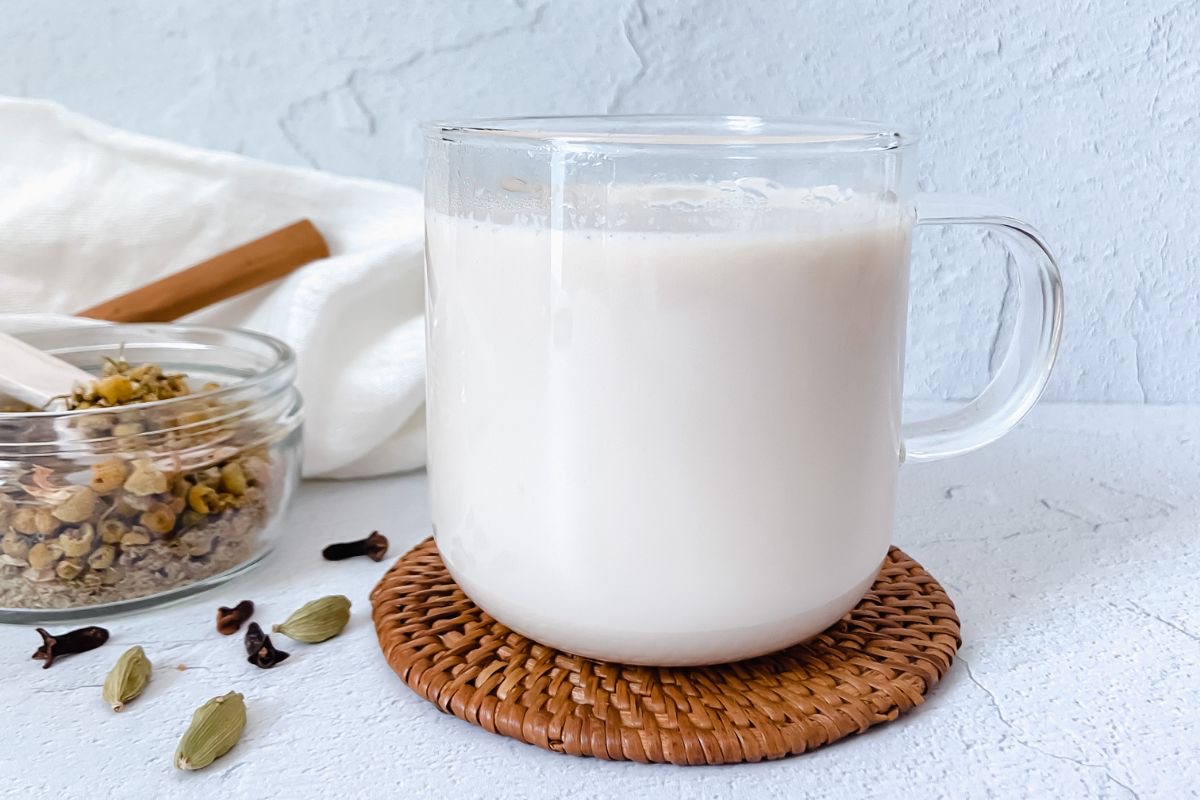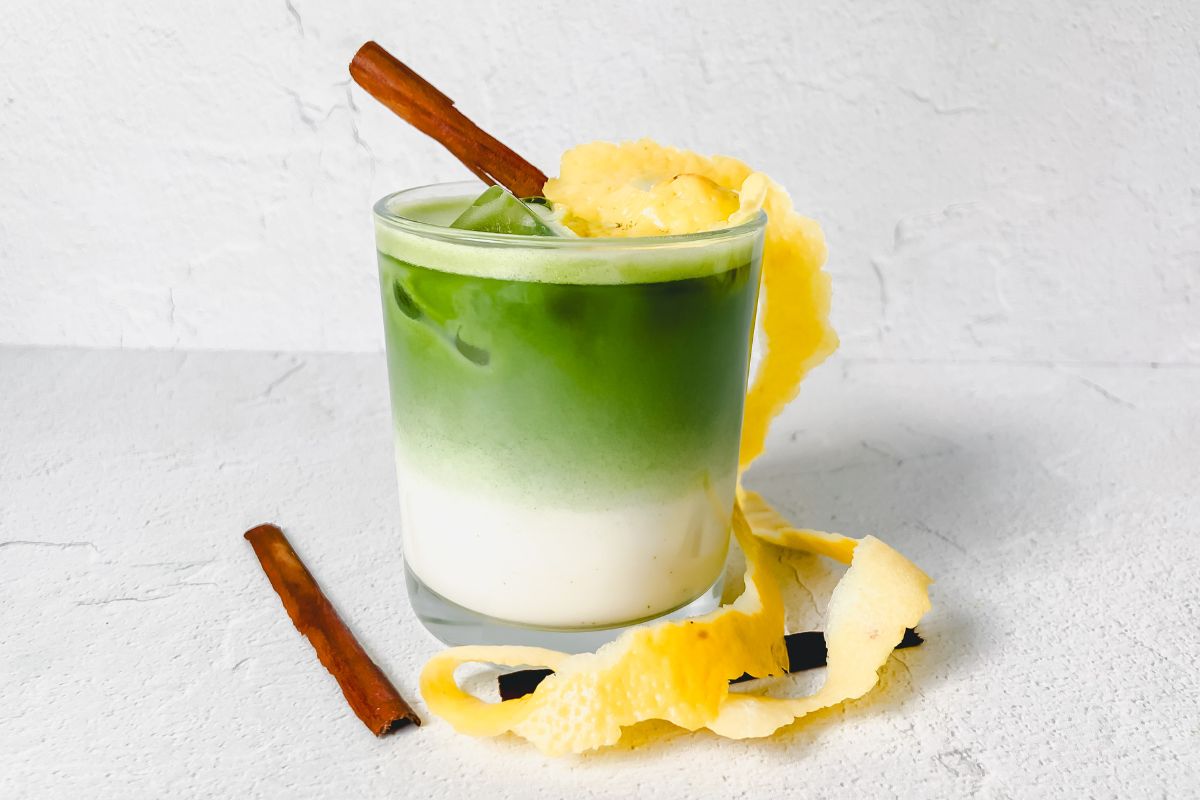Can I put milk in a tea kettle?

The first time I shared my trick on how to clean the inside of a kettle, I got the unexpected question: “Can you heat milk in a kettle of water?”
I had never considered it, but to my surprise, it turns out to my surprise, some do use their tea kettles to heat milk.
So, I did some research to find out the definitive answer to whether this is a good idea or not.
In this post, I’ve gathered for you my findings on:
- what you can expect if you do put milk in your tea kettle
- if there are better alternatives
- how to avoid common mistakes
I hope this helps you choose the best options for you!
Can you put milk in an electric kettle?
The short answer after extensive investigation: heating milk in an electric kettle is NOT a good idea.
An electric kettle is a very time-saving gadget in modern kitchens.
This electrical appliance boils water in a jiffy so you can make tea, coffee and anything that needs hot water (instant soup) very conveniently.
Electric kettles also save energy when you bring water to a full boil before cooking pasta or boiling eggs (among others) with it.
I do really love my electric tea kettle, so I understand, it might be tempting to use one to warm milk too.
But the thing is, electric kettles are only meant to heat water.
That’s why most electric kettle usage instructions specifically state NOT to put anything but water in them.
Reasons to avoid heating milk in your electric kettle
There are several reasons to leave the typical electric kettle just for heating water:
1- Milk may spill over
When milk is heated, it expands and may rise up, spilling over the kettle.
This isn’t just a mess to clean up, but it can reach and damage the electric elements of your kettle.
2- Milk is prone to scorching easily
If you let the milk boil, it will form a crust on the bottom of the kettle that is difficult to remove.
And while there are great tricks to clean the inside of an electric kettle, it’s still better to avoid the problem in the first place.
3- Milk leaves residues
Even if you don’t let the milk boil, it will still leave sticky traces of protein and fat.
Since it’s difficult to scrub the inside of electric kettles and you also can’t leave them to soak, this film can be hard to remove.
This may give place for harmful bacteria and affect the heating mechanism, heat sensor and other critical elements.
Not to mention, these milk residues also pass on an unpleasant smell to the kettle.
And no one wants to ruin their favorite tea with odd tasting water!
Can you warm milk in an stovetop kettle?

We’ve seen that it’s a bad idea to put milk in an electric kettle. But what about those traditional stove kettles that you heat on the gas stove?
Since they don’t have an electric component, it might seem like it would be safer to put milk in them…
But it turns out, the only difference between a non-electric kettle and an electric one is that the first one doesn’t have electronic parts.
Otherwise both were made for boiling water, not to boil milk.
So, it will be probably better to avoid heating milk in a stovetop kettle for the same reasons as with electric kettles: it may get messy and remaining milk residues may affect the taste of your tea.
In top of that, you’ll have to clean the stovetop if the boiling milk splits.
How to warm milk in a kettle
While I don’t recommend you heat milk in a kettle, if you decide to do it anyway, here are some precautions that might help preventing you to end with a bunch of burnt milk. These applies for both electric or stovetop kettles:
- Use a small amount of milk:
Under the premise, the less milk you use, the less likely it is to spill over. - Don’t let the milk boil:
Boiling milk will make it more likely to stick to the kettle and form a crust. - Stay close:
If you leave milk unattended, it can easily boil over or burn. It’s better to be there to take the kettle off the heat source as soon as the milk is warm enough. - Let the top of the kettle open:
Don’t cover it so you see how the milk is heating up - Put first a little amount of water at the bottom:
Some say the cold water act as a sort of protective layer.
While I haven’t found scientific data to support this claim, I use this trick when heating milk in a pan (such as when making creamy hojicha latte) and it seems to work (at least for a saucepan).
In case you are using a stovetop kettle, also:
- Put the kettle on a low heat:
Boiling milk can easily scorch, so it’s best to warm it gently. - Stir often:
This will help the heat to distribute evenly and prevent scorching.
Better ways to heat milk
As we’ve seen, it’s better to avoid putting milk in a tea kettle, whether it’s electric or stovetop.
Fortunately, there are other possible ways to heat a glass of milk, and they are all quite easy:
Use a pot on the stove:
This is the most common way to heat milk.
Place the milk in a pot on the stove and heat it over medium heat, stirring often.
The microwave method:
This is probably the most convenient method.
Just make sure to use a microwave-safe container.
Use a milk kettle:
Yes, there is such a thing!
While traditional kettles and electric tea kettles are only designed to heat water, there are also kettles that are made especially for heating milk.
These have a coated wall to prevent scorching.
At the same time, they come with a steam wand to froth the milk.
Actually, most of the times you’ll find them under the name of electric milk frother or electric milk steamer.
Mine is similar to this one and I love it!
How to clean your kettle if you’ve put milk in it

If you’ve made the mistake of putting milk in your kettle and now it needs cleaning on the inside, don’t despair: check out my post on how to clean the a kettle with white vinegar or lemon for some helpful tips.
If your kettle isn’t electric, you may also soak it entirely in a solution of powdered dishwasher detergent or regular dishwasher and water before you scrub it with a bottle brush.
If your kettle is electric and you aren’t sure if the electric components are still okay, it’s best to consult a professional or the manufacturer to avoid potencial dangers.
Other related questions about putting milk in a kettle
You shouldn’t bring almond milk to boil because it doesn’t taste good when burnt.
Warming almond milk in a kettle would also leave a residue film in the inside, so it’s best to avoid heating almond milk, as any other type of milk, in a kettle altogether. Unless if it’s a milk steamer: you can warm and froth almond milk in a milk kettle.
The best electric kettle for heating milk is the one designed specifically for this purpose: electric milk frothers or steamers.
They are also known as electric milk boiler or milk warmer.
Kettles that heat milk have a Teflon non-stick coating, so it’s easier to clean them. This kind of multipurpose electric kettle also has a double bottom that prevents the milk having direct contact to the heating element.
Also, they only warm milk without bringing it to a boil.
Just be aware that some milk frothers don’t include the function of warming milk. Also, some only warm milk if frothing it afterwards.
While there are as many options to add milk to tea as there are tea drinkers in the world (cold milk, warm milk, milk before pouring the tea, milk after…), many add milk without warming.
This way, the milk cools down the tea so you can drink it without waiting so much.
Another reason why many tea lovers don’t want to heat the milk is that heating the milk changes its taste, as well as that of the tea you add it to.
So, there is no obligation to heat the milk and if you want to keep the original taste of your tea, it could be better to avoid it.
Thanks for reading. I hope this article has helped clear any doubts you had about whether you can put milk in a tea kettle!
In case reading so much about milk has brought you in the mood of a steamer, here are some easy but delicious milk-based drink recipes for you.







Thank you so much for the easy to understand explanation! From now on I will stick to warming milk in the microwave then 😅
You’re welcome! I am glad it helped!